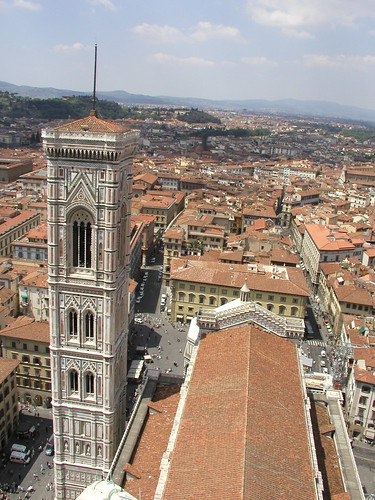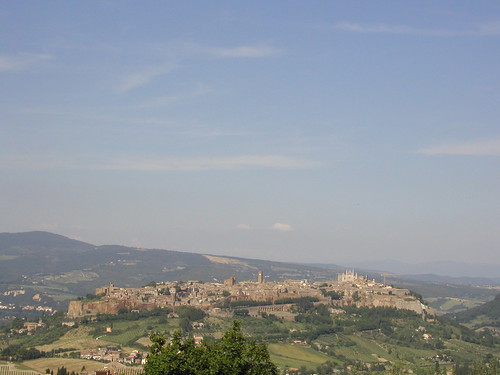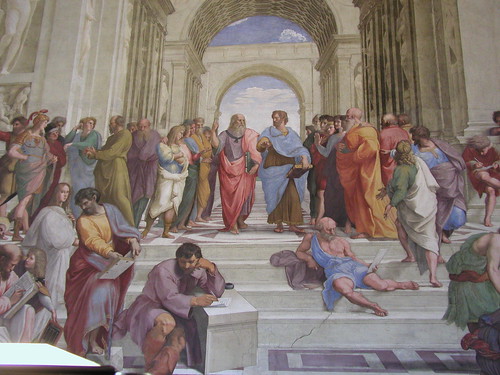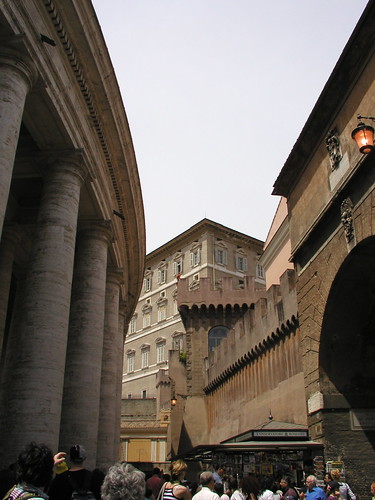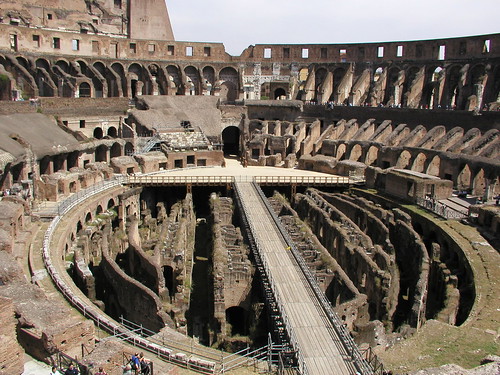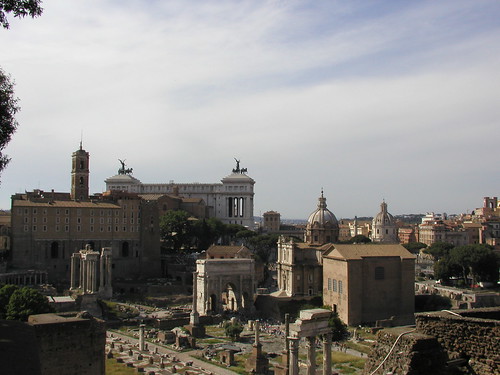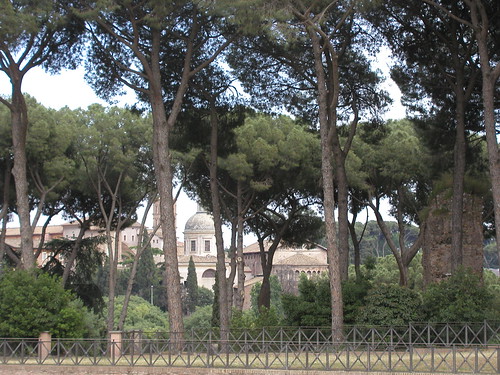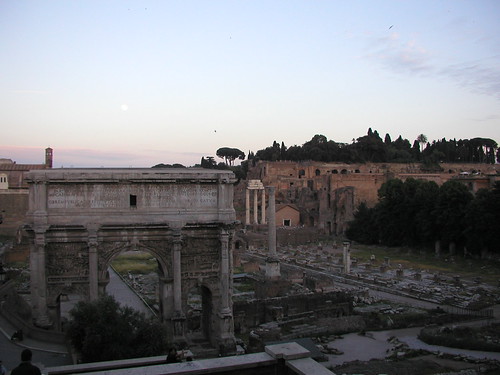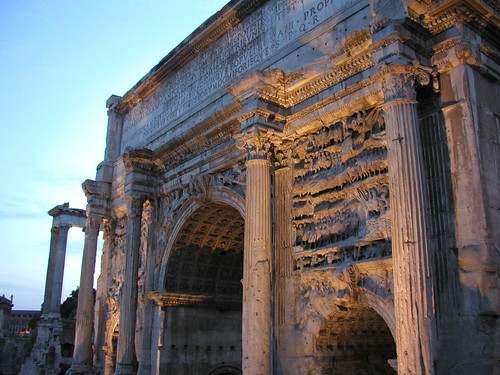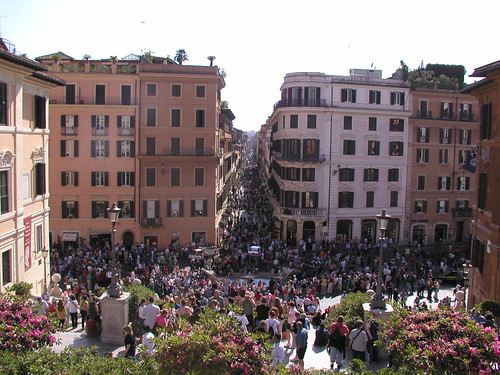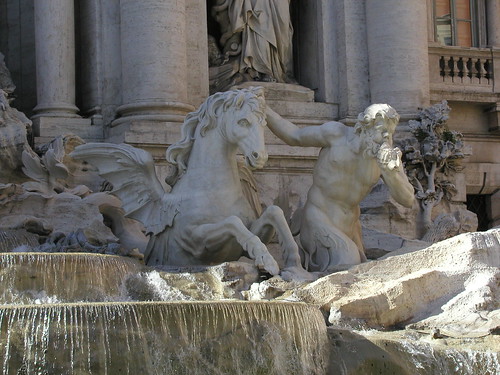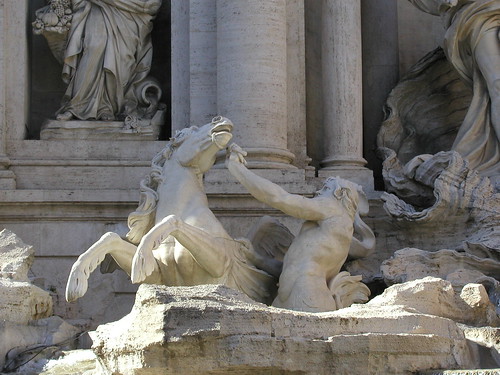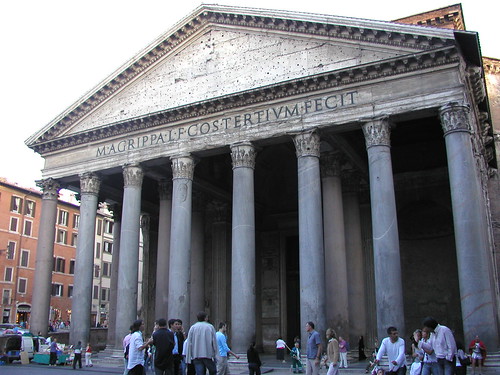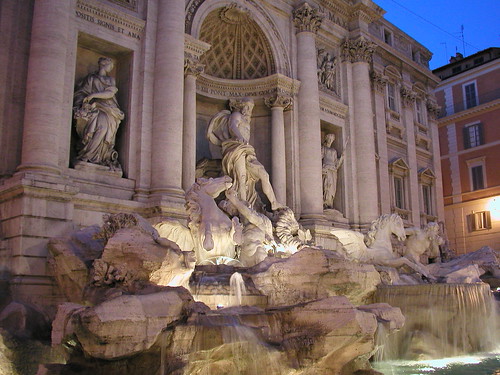The dome was engineered by one man, Filippo Brunelleschi, and he also created several new types of construction equipment that were essential for building the dome. Like the Roman Forum & the Sistine Chapel, I became interested in seeing this landmark because of a book-- In this case, the book is Brunelleschi's Dome by Ross King, who is also the author of Michelangelo and the Pope's Ceiling. I highly recommend it to anyone who has any interest at all in architecture or engineering.
One of the things that I found interesting is that, during the Renaissance, Italians had a very low opinion of the "flying buttresses" prevalent elsewhere in Europe. They viewed the buttresses as a sort of ugly scaffolding technique. And actually, that's exactly what they are-- Well, ugly is up for debate, but they're definitely a structural crutch. The Gothic style was focused on bringing lots of natural light into buildings, primarily by creating high, vaulted ceilings and adding lots of windows. But high walls filled with windows would not have been strong enough to resist the outward thrust created by the arches that were used to construct the roofs, so flying buttresses were added to help provide extra resistance against that thrust. (As walls get taller, they also become less capable of resisting outward thrust.) While Italians did incorporate Gothic-style arches and windows into their churches, they resisted using flying buttresses, making their great churches significantly different from the cathedrals of England & France. (In this case, they did wind up having to implement a different sort of crutch. In the photos below, look for the black iron bars running across the vault. These tension members were added (per Brunelleschi's suggestion) after the main vault was completed, because the walls started to show signs of outward movement.)
Brunelleschi's challenge was to create a massive, octagonal, Gothic-arch-style dome that could be supported by the walls of the church. Fortunately, he happened to be a genius capable of the task, and so his dome still stands today, an architectural masterpiece in the heart of Florence.
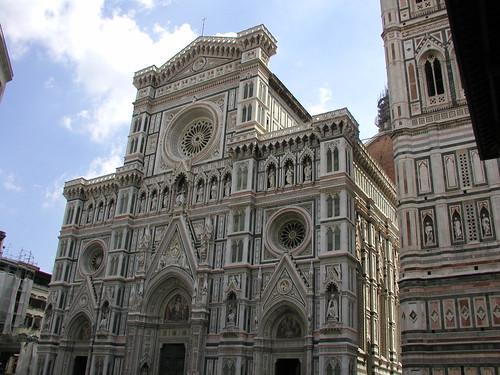
The facade of Santa Maria del Fiore - Every inch of the marble is either intricately carved or inlaid with green or pink marble accents. Up close, the elaborate carvings look like they're made from confectioner's icing and twisted sticks of hard-candy.
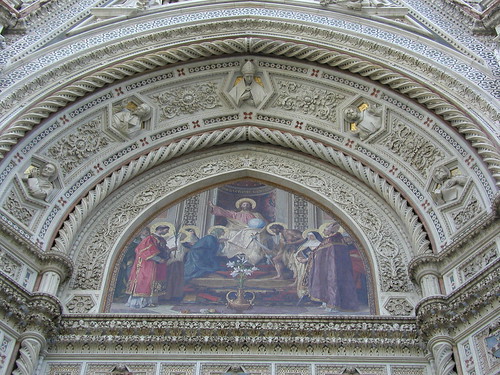
We started our day by checking out of our hotel and reclaiming our car so that we could stash our luggage in its trunk. Then we had to find a place to park the car, which took a while. After that, we set off on foot for the Piazza della Duomo. We stopped at a pastry shop along the way, and sat on a bench outside the church to eat our breakfast. When the gypsies and the Asian-scarf/shawl-vendor-ladies became too much of a nuisance, we decided to get in line. We weren't really sure what we were getting in line for, but that's what you do when you're a tourist in Italy... When you arrive at some famous, amazing site, you get in line. Sometimes it works out the way you were expecting, and sometimes it doesn't. I mention this because a couple of young Italian women approached us while we were in the line, and this is how the conversation went:
Woman #1: "Parlate Italiano?"
Me: "No. Inglese."
Woman #1: *Something in Italian*
Me: *Shrug* "Sorry, I don't know."
Woman #1 to Woman #2: "Como dite i biglietti?"
Woman #2: "Tickets"
Woman #1 to Me: "Si. Tickets?"
Me: "I hope so!"
I'm not sure if she was asking, "Is this the line for tickets?" or "Do you know how much the tickets cost?" It didn't really matter. Even though they hadn't gotten any coherent answers, they shrugged, and got in line with the rest of us tourists, and we all wound up inside the church.
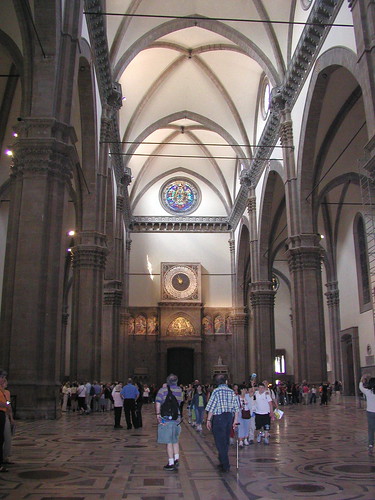
Interior of the church, facing toward the entrance.
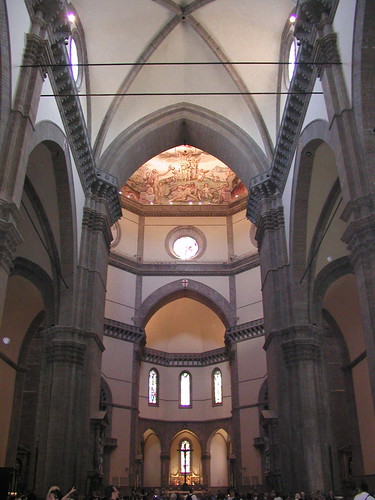
Interior of the church, facing toward the dome.
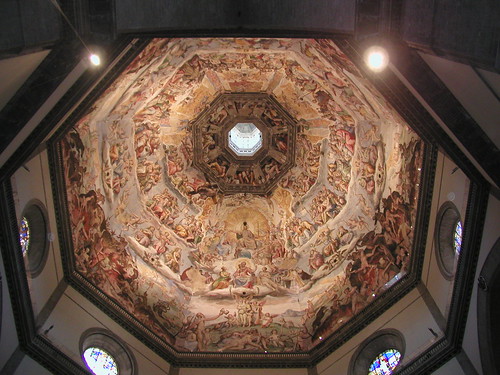
Interior of the dome.
As it turns out, admission to the church itself is free. You do, however, have to pay a fee of 6 Euros (and get in a different line) to go up into the dome. But it was well worth the price, even after factoring in the 463 steps to the top. The climb starts off with narrow stone stairs enclosed between stone walls. The straight staircases change to very tight spiral staircases, twisting upward inside the church walls and into the drum that supports the base of the dome. The drum has two walkways that overlook the interior of the church...
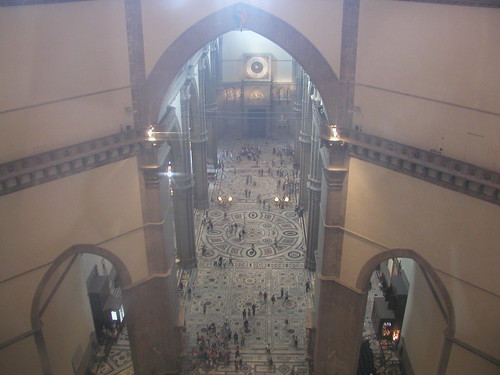
(Sorry about the glare-- They've got plexiglass up along the walkway (presumably so that people can't drop things) and the sunlight from the circular windows in the drum is reflecting off the plexiglass.)
There are actually two massive octagonal domes, with a hollow cavity between them. The lower dome is what you see from inside the church, and the outer dome is the roof that you see from the outside. Both domes were built in rings, without any framing or scaffolding, supporting their own weight as they grew upward. They are capped by a lantern (a tall cylinder with windows) which allows sunlight to illuminate the church through the top of the dome.
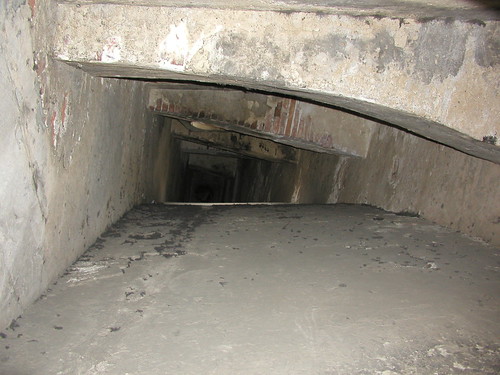
At the base of the dome, the steps become integrated into the surface of the inner dome. They follow a path tangent to the circumference of the dome, slanting at odd angles as they wind upward through the irregular cavity between the two domes. The last set of steps turn toward the center of the dome, climbing directly up the surface of the inner dome.

Finally, there is a stone ladder leading up through the outer dome, so that you escape the cave-like cavity and arrive, blinking in the glare of the sun, at the pinnacle of the dome. From the ledge surrounding the lantern you can see all of Florence stretched out below you, a lake of orange tiled roofs surrounded by the green hills of Tuscany.
